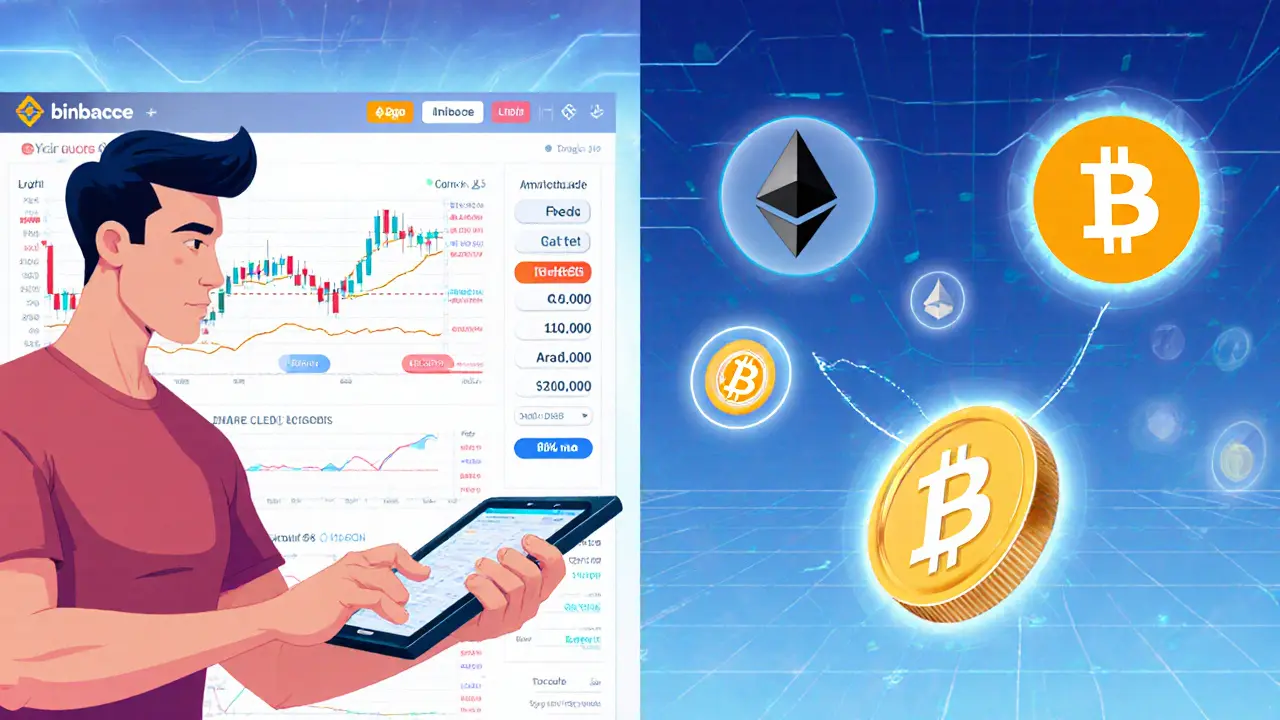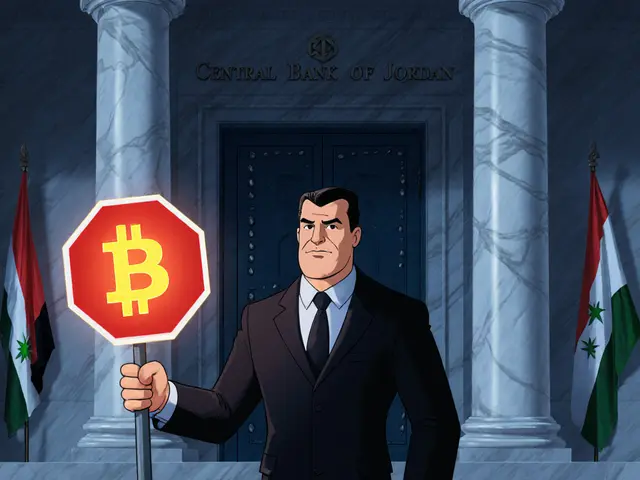Coins.ph Trading Fee Calculator
Calculate Your Fees
Fees Breakdown
How Fees Work
Coins.ph offers tiered trading fees based on your 30-day trading volume:
- 0 – 0.5M PHP 0.15%
- 0.5M – 2M PHP 0.13%
- 2M+ PHP 0.10%
Note: Fees decrease as your 30-day trading volume increases.
Comparison with Other Exchanges
| Exchange | Base Fee (Spot) | Trading Volume Tiers | Local Payment Support |
|---|---|---|---|
| Coins.ph | 0.10%–0.15% | 3 tiers based on 30-day volume | GCash, PayMaya, Dragonpay, bank transfers |
| Binance | 0.075% | Volume-based | Limited (GCash via third-party) |
| Coinbase | 0.50% | None | Bank transfers only |
Looking for a crypto platform that works with everyday Filipino payments while staying on the right side of the regulators? Coins.ph promises exactly that, but does it deliver? This review breaks down the exchange’s core features, fee structure, user experience, and how it stacks up against global rivals like Binance and Coinbase.
Key Takeaways
- Fully regulated by the Bangko Sentral ng Pilipinas (BSP), giving it a legitimacy edge over many overseas exchanges.
- Supports over 170 cryptocurrencies, with Bitcoin (BTC) and Ethereum (ETH) among the most liquid pairs.
- Coins Pro offers spot trading with market, limit and stop‑limit orders, but no margin or derivatives.
- Spot fees range from 0.10% to 0.15% and decrease with higher 30‑day volume; still higher than Binance’s 0.075% base rate.
- Integrated payment options (GCash, PayMaya, Dragonpay, bank transfers) make fiat‑crypto moves convenient for local users.
- User ratings have slipped to 2.7 stars on Google Play as of August2025, mainly due to support delays and occasional downtimes.
Platform Overview
Coins.ph is a Philippine‑based cryptocurrency exchange and digital wallet founded in 2014. It operates under a license from the Bangko Sentral ng Pilipinas (BSP), the country’s central bank, which mandates strict AML/KYC compliance and consumer‑ protection standards. The platform claims more than 18million registered users, making it the largest crypto service by headcount in the Philippines.
Regulatory Backbone
The BSP license gives Coins.ph a clear compliance advantage. All fiat deposits and withdrawals must pass the central bank’s verification checks, which reduces the risk of fraud but also adds a few extra steps during onboarding. For users who value legal certainty-especially merchants and small businesses-this regulatory seal is a major plus.
Asset Selection & Trading Services
The exchange lists over 206 digital assets, though only about 170 are actively tradeable. Core assets like Bitcoin (BTC) and Ethereum (ETH) enjoy deep liquidity and tight spreads. Stablecoins such as USDC are also available, allowing users to park funds without exposure to price swings.
Two main services cover the trading spectrum:
- Coins Convert: a simple buy‑sell interface ideal for newcomers who want to convert PHP to crypto (or vice‑versa) in a few taps.
- Coins Pro: a more advanced spot‑trading suite with over 80 PHP‑based pairs and 11 USDT‑based pairs. It supports market, limit and stop‑limit orders, but lacks margin, futures or options.

Account Types & Mobile Experience
Signing up requires an email or mobile number, followed by KYC verification (photo ID, selfie, and proof of address). Once verified, users can access both Coins Convert and Coins Pro from the same account. The mobile app-available on iOS and Android-mirrors the web UI, letting traders monitor charts, set alerts, and execute orders on the go.
Fee Structure & Trading Limits
Coins.ph follows a tiered fee model based on 30‑day trading volume:
- 0-0.5M PHP: 0.15% per trade
- 0.5-2M PHP: 0.13% per trade
- 2M+PHP: 0.10% per trade
Minimum order sizes vary by pair: for BTC/PHP, XRP/PHP, USDT/PHP, USDC/PHP and PYUSD/PHP the floor is PHP60; other pairs start at PHP100, and the absolute minimum spot order is PHP50.
Comparison with Global Rivals
| Feature | Coins.ph | Binance | Coinbase |
|---|---|---|---|
| Regulatory status in Philippines | Licensed by BSP (full compliance) | Unlicensed, operates via offshore entity | Unlicensed, limited local payment options |
| Supported crypto count | ~170 tradeable assets | ~500 assets | ~250 assets |
| Spot fee (base tier) | 0.15% | 0.075% | 0.50% (maker) / 0.50% (taker) |
| Local fiat payment methods | GCash, PayMaya, Dragonpay, Palawan Pawnshop, bank transfers | Limited (only GCash via third‑party) | Bank transfers only (higher fees) |
| Advanced trading tools | Spot only, no margin or derivatives | Spot, margin, futures, options | Spot, limited derivatives (US‑only) |
| Mobile app rating (Google Play, Aug2025) | 2.7/5 | 4.5/5 | 4.2/5 |
Payment Integration & Fiat On‑Ramp
The standout for Coins.ph is its deep connection to Filipino payment ecosystems. Users can top up their crypto wallets via GCash, PayMaya, or over 3,000 physical outlets like Dragonpay and Palawan Pawnshop. Withdrawals work the same way, letting traders convert crypto back to PHP and pay utility bills, buy mobile load, or send money through InstaPay. This level of integration is something global exchanges struggle to replicate without a local partner.

User Experience & Support Landscape
Onboarding is smooth: after entering a phone number, users receive an OTP, complete KYC, and can start buying crypto within minutes. The UI for Coins Convert is intuitive-just pick an asset, enter the amount, and confirm. Coins Pro, however, feels more like a stripped‑down version of Binance; the order book is less detailed and the charting tools are basic, which can frustrate seasoned traders.
Support remains a pain point. The help center offers email tickets and a live chat limited to business hours. During peak market swings (e.g., May2025 Bitcoin rally), response times stretched beyond 48hours, leading to a noticeable dip in the app’s rating-from 3.3 to 2.7 stars in just three months.
Pros & Cons
- Pros
- Full BSP licensing guarantees regulatory safety.
- Seamless fiat‑crypto bridge with local payment methods.
- Low minimum deposits (as low as 5PHP or 0.00000001BTC).
- OTC desk for institutional traders (minimum PHP1M).
- Cons
- Higher spot fees compared with international peers.
- No margin, futures, or derivative products.
- Customer support slower than needed during high volatility.
- Mobile app rating declining, indicating stability concerns.
Who Should Use Coins.ph?
If you’re a Filipino resident who wants to move money between crypto and everyday bills without juggling foreign bank accounts, Coins.ph is a solid choice. It shines for:
- Newcomers needing a simple buy‑sell experience (Coins Convert).
- Users who rely on GCash, PayMaya, or cash‑in agents for fiat transactions.
- Small businesses accepting crypto payments and needing immediate fiat conversion.
Power traders seeking low‑fee, high‑leverage, or derivative markets will likely gravitate toward Binance or a similar global platform.
Future Outlook
Regulatory tightening in the Philippines suggests that licensed local players like Coins.ph will retain a protective moat. However, to stay competitive, the exchange must address its two biggest weaknesses: improving customer‑service response times and adding more advanced trading tools. If the platform rolls out features like margin trading or richer charting, it could bridge the gap between local compliance and global functionality.
Frequently Asked Questions
Is Coins.ph safe to use?
Yes. Coins.ph operates under a Bangko Sentral ng Pilipinas (BSP) license, which forces the exchange to follow strict AML/KYC rules and maintain a reserve of funds for user protection. This regulatory oversight makes it safer than many unlicensed offshore platforms.
What cryptocurrencies can I trade on Coins.ph?
The exchange lists over 170 tradeable assets, including Bitcoin (BTC), Ethereum (ETH), Ripple (XRP), USDC, and many smaller altcoins. Stablecoins are also available for users who want to avoid volatility.
How do I deposit Philippine pesos?
You can fund your account via GCash, PayMaya, Dragonpay, Palawan Pawnshop outlets, or direct bank transfers (InstaPay, PESONet). Most methods are instant and support deposits as low as 5PHP.
What are the trading fees compared to Binance?
Coins.ph charges 0.10%‑0.15% per spot trade, depending on 30‑day volume. Binance’s base spot fee is 0.075%, which is lower, but Binance does not offer the same local fiat‑payment integrations that Coins.ph provides.
Can I use Coins Pro for margin trading?
No. Coins Pro currently supports only spot trading with market, limit and stop‑limit orders. Margin, futures, and options are not available on the platform.




11 Comments
Jason Clark
So Coins.ph slaps you with a 0.15% fee unless you magically trade millions of pesos a month – then you get a measly 0.10% discount. Sure, it’s regulated, but the fee structure feels like a tax on people who are actually trying to use crypto for everyday payments.
Jim Greene
Honestly, the local payment options are a lifesaver 🚀. Top‑up with GCash in seconds, sell crypto and pay your electric bill without leaving the app. The fee game isn’t perfect, but for a Filipino user it’s still a huge step forward! 😊
Russel Sayson
Let’s get dramatic: you’re sitting in Manila, staring at a screen, waiting for a transaction to clear while the market swings like a roller‑coaster. Coins.ph’s downtime during those spikes feels like the universe conspiring against you, and the support crew? Ghosts. If you wanted an adventure, go buy a lottery ticket, not a crypto exchange.
Isabelle Graf
Morally, a platform that complies with the BSP should be praised, but the reality is a clunky UI and apathetic support. Users deserve better than a “we’ll get back to you in 48 hours” reply.
Shane Lunan
It works fine for basic buy‑sell but the chart tools are bare bones.
Jeff Moric
Sounds like a classic case of “good intentions, shaky execution.” If you’re new, stick with Coins Convert; if you need more depth, consider a hybrid approach with Binance for advanced charts while keeping Coins.ph for fiat on‑ramps.
Jordan Collins
The BSP licensing is a genuine differentiator for any Philippine‑based trader. It means your deposits are insured under local regulations, which is a comfort factor that many offshore exchanges can’t match.
Ken Lumberg
True, but the lack of margin and futures is a deal‑breaker for serious traders. If you’re only doing spot, fine, but don’t expect to compete with Binance’s product suite.
Cynthia Chiang
Okay, let me break this down a bit because there’s a lot to chew on. First off, the regulatory shield that Coins.ph enjoys is a massive plus – it’s not every day you see a crypto service fully licensed by the Bangko Sentral ng Pilipinas, so you can at least sleep a little easier knowing your funds are under some governmental oversight. That said, the fee schedule feels like a graduated tax on anyone who isn’t a whale; 0.15% for low‑volume traders is already higher than most global exchanges, and even when you cross that 2 million‑peso threshold, you’re only nudged down to 0.10%, which is still double Binance’s base rate.
On the upside, the integration with GCash, PayMaya, and a slew of physical cash‑in points is something you just can’t get on Binance or Coinbase unless you’re willing to jump through a lot of hoops or use third‑party services that add extra fees. For a Filipino user who wants to move money between crypto and daily expenses – paying the electric bill, topping up phone credit, or sending money through InstaPay – this convenience is a game‑changer.
The UI is a mixed bag. Coins Convert is slick and intuitive; you can buy Bitcoin in a few taps, and the confirmation flow feels modern. Coins Pro, however, looks like a stripped‑down version of Binance – the order book is thin, the charting widgets are basic, and there’s no depth‑of‑market data. If you’re a seasoned trader, you’ll feel cramped quickly.
Support is where the platform really hurts its reputation. During the May 2025 Bitcoin rally, response times stretched beyond two days, and the live chat only worked during business hours. That lag pushed the Google Play rating down to 2.7 stars – a clear signal that users are frustrated.
In short, Coins.ph is a solid entry point for newcomers and for anyone who lives the Filipino cash‑centric lifestyle. It gives you regulatory peace of mind and effortless fiat on‑ramps. If you need advanced tools, lower fees, or faster support, you’ll likely have to keep a foot in a global exchange as well. The platform’s future will hinge on whether it can upgrade its trading suite and support infrastructure without losing the local compliance edge.
Hari Chamlagai
Honestly the fee advantage disappears once you compare the total cost of GCash top‑ups and withdrawal fees – it’s not the cheapest overall.
Ben Johnson
Short and sweet: It works, but it’s not perfect.